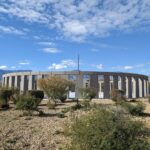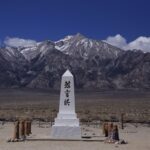Ride the Underground Railroad
Locationless Geocaches and the Language of Location
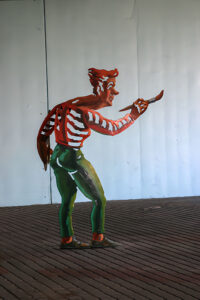
Geocaching history can be fascinating in its own right. The locationless or reverse geocaches were conceived by Jeremy Irish to boost the game there were few physical caches for people to find. But if the game was about the “language of location” how could there be a locationless geocache?
It was similar to a scavenger hunt. A cache owner provided a description of a desired object and task. Once the requirements were met at that location, no one else could use it to claim a find. This made them different from the new ones that Groundspeak has published from time to time, as well as waymarks.
Although some other platforms still have locationless caches, only 382 were published by Groundspeak. The list of caches included both common destinations and some extremely obscure ones. I still regret not logging ones the legendary Yellow Jeep.
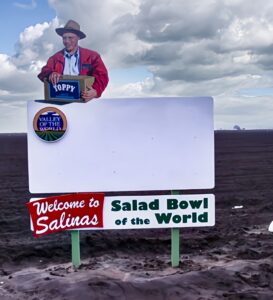
These caches would not be practical today given the numbers competing for a single spot — disputes and frustrations would have been inevitable. Back then, however they were my favorite. I enjoyed researching where they might be found. There were fascinating discoveries that I still cherish.
The last few weeks before they were archived is still one of the best times I have had in the in the game. We set off on a short trip to find several, including a giant chess set, an ancient aqueduct, and the world’s capital of something. Some cache owners wanted people to post farewell messages. I posted one but the CO thought I was two hours too late. It was a crazy time to be a geocacher.
Groundspeak encouraged cache owners to switch to waymarks before the final day. I remember going to get a “funny mailbox” around that time. It was active when I left, but was “prematurely archived” before I could get home. The CO told me to get on board with waymarking, but it was not the same. And some grudges are hard to let go, seemingly even years later.
Things were ending, but some things were still possible. Hopes and dreams were in the air. A friend found that he could log multiple fire engines in different areas and ended up with 384 finds. He was trying for the record. I don’t think he set it — I cannot find a definitive leaderboard but somebody pointed to higher numbers at the time.
Some were glad to see them go since they weren’t real geocaches, whatever that means. Of course, not everyone was happy with Groundspeak’s decision. Before the caches were locked, one cache owner added THIS CACHE WAS MURDERED! BORN 11/14/2002 DIED 01/01/2004
The are not forgotten. Every so often I will see something that qualified and blurt out that it could have been a locationless. I should keep track and give myself two points if it had been unfound by me back then. My wife and kids have never been that impressed, but you had to be there in the day. Their end might have been necessary, but I still miss them like a good memory.
Mary Pleasant and the Underground Railroad
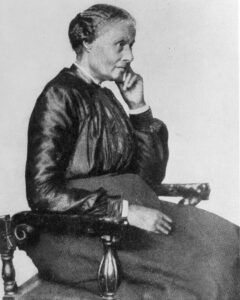 To me, Ride the Underground Railroad was the ultimate locationless — in part because of the subject but also because I had no trips scheduled out of California, so what could be done with something centered across the country?
To me, Ride the Underground Railroad was the ultimate locationless — in part because of the subject but also because I had no trips scheduled out of California, so what could be done with something centered across the country?
As it turned out, a marker to the Western Terminus of the railroad was in San Francisco, at the smallest city park. It was relatively close to where I worked. I held my breath hoping no one would log it before I could claim it. I woke up early and all went well. I think it was the only qualifying location in my state, so that was it. I still take visitors there to see it.
As the plaque states, Mary Ellen Pleasant is regarded as the “mother of civil rights” in California. She was an amazing woman and it is a privilege to see trees that she planted.
She stated that she was born free in Philadelphia. Some have advanced much more exciting narratives, including being born in the Caribbean to a voodoo queen. Perhaps they did not regard a black woman to be capable of doing all that she did on her own.
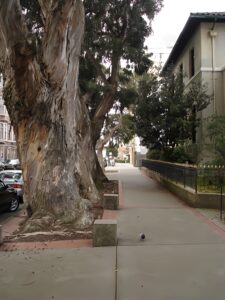
In any event, the underground railroad was dangerous work. She was under suspicion for helping escaped slaves and ultimately had to leave the East Coast. There was danger from slavers and the Fugitive Slave Act imposed penalties for those bringing people to freedom.
She spent a brief time in New Orleans where she continued to help others to escape. Some say she took voodoo lessons from Marie Laveau — they could have met but again it seemed that something was needed to explain her wealth and courage. She left for San Francisco shortly before she could be arrested.
In San Francisco she and her husband contined to help slaves toward freedom. The work was cut out for her. Owners had brought slaves to the mining claims during the Gold Rush. Those who escaped faced slave catchers and racism. The governor wanted to eliminate all blacks from the state. In addition, any black person could be sold into slavery if they did not have appropriate papers.
Pleasant earned money by cooking and she started several businesss, calling herself a capitalist. Sometimes she pretended to be a domestic servant so people would not ask questions. She invested well. With that income she established the Western Terminus, paid expenses of escaped slaves, gave them work, and provided money for their legal needs. She also funded efforts to repeal laws that kept blacks from testifying in court.
Mary moved again in 1857 to work with John Brown. When his uprising failed, Brown had a note stating “The ax is laid at the foot of the tree. When the first blow is struck, there will be more money to help.” Who thought that it was written by a poorly educated black woman? In today’s money she had given him over a million dollars, that she later described as one of her most significant accomplishments.
After the war, she was better able to identify herself as a woman of color as well as one who was wealthy. She did not have to pretend to be the servant of friends who lived in her house. And of course she devoted her time to find housing for blacks, establishing black schools, and fighting against Jim Crow laws. Her grave in Napa is included as part of a virtual geocache.
My Log
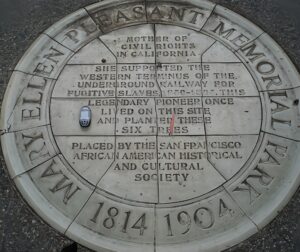
California’s Underground Railroad is little known. But it is estimated that during the gold rush period were between 200-300 enslaved African Americans in mining areas. Many Southern slave owners saw the Gold Rush as a chance to extend slavery into Western territory and relied on the Fugitive Slave Law to support their claim.
The state was divided, and in San Francisco, a chief justice (and southern sympathizer) fought a duel and killed an abolitionist senator, whose last words were reputed to call for the end of slavery.
Mary Ellen Pleasant was the mother of the abolitionist movement in California. Her home was the Western Terminus of the Underground Railroad. Her story is fascinating in its own right. She was one of the most famous women in San Francisco — as a black woman, she secured a fortune, helped fugitive slaves, was a member of John Brown’s group, and orchestrated court battles.
This plaque is on Octavia and Bush Streets in San Francisco, the site of her home. The trees along that section of the street were planted by her, and the plaque documents her activity with the underground railroad.
(8/26/2005)

